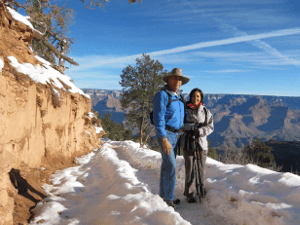Are you a fan of the outdoors? Considering this is the centennial anniversary of the National Park Service, it might be a good time to consider exploring nearby parks to hike. Late summer and early fall can be ideal times to get outside, because the weather is starting to cool but the first snow hasn’t fallen yet.
Not everyone is lucky enough to live near a hiking trail, but there are plenty of weekend trips you can take to get your nature fix. If you aren’t into camping because you like hot meals and showers, day hikes might be just the thing to help you unplug and unwind from a busy week.
Following are five essentials for a day hike:
Water.
Most people underestimate how much water they will need to stay hydrated on the trail. While you might not sweat the duration of the hike, you are using energy and you are exposed to the sun, both of which deplete your reserve. Remember to pack at least 16 ounces of water for every 2-3 miles. A camelback pack is a great way to stay hydrated on longer trails, and doesn’t take up as much room as bottles.
High nutrient snacks.
Like with water, we can underestimate the amount of fuel we need for a hike. Try to stop and eat a few bites of a protein bar or a handful of trail mix every hour, especially on more strenuous trails. It’s good to put electrolyte packs into your water for added minerals, like magnesium. We often get tired because we aren’t maintaining fuel levels.
Sunscreen.
Protecting your body and face from the sun is really important on a hike. Be sure to apply sunscreen and keep some in your pack to reapply as the day wears on and you start to sweat. You don’t want to wake up with a painful burn the next morning.
A hat.
Hats are as important for a hike as sunscreen and water. A hat protects you from the elements, and provides a natural shade for your face and neck. Try to wear a hat that has a brim or flap that covers the neck.
A compass.
While phones provide GPS services, when you are on a trail, you can’t always expect to get a signal. This is why compasses are an important part of hiking. If you come across a fork in the road or somehow wandered off the main trail, you can check your compass against the map to make sure you head in the right direction.
Some other things to keep in mind:
Research wildlife in the area.
If you come across bears or bobcats or snakes, it’s good to be prepared. Also, if you’re hiking by yourself, be sure to let a friend know where you are. Safety is important.
Happy trails!
